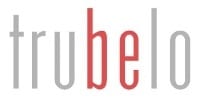Download our 7 Thought Traps Infographic
As individuals and in groups, we like to believe we’re making rational, data-driven decisions—leading with logic, empowering teams, and driving toward shared goals. But what if the very voice we rely on to guide our actions—the collective voice of our teams, our leadership, our culture—is lying to us? Not maliciously, but subtly. Consistently. Systemically.
These lies emerge from cognitive distortions: deeply embedded patterns of thinking that warp our perception of reality. These are the movies that automatically play and cast us as the leading and supporting characters. Originally identified in individual psychology, cognitive distortions extend beyond the personal level. They scale to the groups to which we belong. They become embedded in our communication, decision-making, and even leadership. And when left unchecked, they quietly sabotage innovation, morale, and progress.
We’ve all seen these distortions firsthand in the organizations we’ve worked in. Sometimes, the red flags show up in a project post-mortem where everything is framed as a total failure despite measurable wins. Other times, it’s a team convinced no one ever listens to them, despite multiple instances of the contrary. More often than not, the distortions that take hold and influence our organization the most, reflect the mindset of leadership—our mindset—rippling across the organization.
Let’s break down some of the most common organizational cognitive distortions and how they show up:
1. Magnification (Catastrophizing) or Minimization
We’ve all heard it: “If we miss this deadline, we’re done.” Or the opposite: “It’s just a small issue—don’t overreact.”  Catastrophizing exaggerates challenges, driving fear-based decision-making. Minimization, on the other hand, dismisses problems that deserve attention. Both distort reality and lead to reactive leadership.
Catastrophizing exaggerates challenges, driving fear-based decision-making. Minimization, on the other hand, dismisses problems that deserve attention. Both distort reality and lead to reactive leadership.
What to do: Regularly call out and assess your own risks and wins with a balanced scorecard of your performance. Create space in meetings to explore both what went well and what can be improved, side by side.
2. Overgeneralization
A single failed delivery becomes “Agile will never work here. We need to go back to waterfall.” One negative client review becomes “Our product just isn’t good enough. We need to go back to what we know.” These blanket statements limit growth and experimentation by embedding learned helplessness into the culture.
What to do: Challenge sweeping statements by asking, “Is this always true?” or “When has this not been the case?” Use real data to reframe overgeneralized thinking. Share stories of the failures of respected innovators that lead to their successes.
3. Mental Filter
We fixate on the one thing that went wrong in a campaign, ignoring the ninety-nine things that went right. This distortion drains team morale, reduces psychological safety, and fosters environments where only perfection is accepted. We recognize what doesn’t work quicker than what does, but we must be mindful to not dwell on it.
What to do: Celebrate small wins regularly. Build “what worked” reflections into debriefs and retrospectives to ensure successes are seen and shared. For every negative outcome, identify two positive results or lessons learned.
4. Jumping to Conclusions
We assume what people are thinking or what’s going to happen before anything actually happens. A team doesn’t respond quickly? “They must be ignoring us.” A project hits an obstacle? “We knew it wouldn’t work.” These assumptions kill curiosity, encourage confirmation bias, and create a culture of second-guessing.
What to do: Replace assumptions with questions. When in doubt, ask. Engage in scenario planning to create alternative outcomes different from the obvious ones. Create norms around inquiry over assumption in decision-making and feedback.
5. Disqualifying the Positive
Success is often dismissed as a fluke. “Better to be lucky than good.” Recognition and credit are brushed off as “just doing our jobs.” This distortion erodes confidence and keeps the organization in a constant state of chasing validation without ever arriving.
What to do: Make recognition meaningful and measurable. Highlight how achievements align with values and objectives, and document successes as part of organizational memory. Take time to celebrate and savor the wins as much as the losses. Close meetings with organizational success stories. Release people back to their workday energized and inspired to continue their work.
6. Personalization
When something goes wrong, individuals or departments are blamed—even if the cause was systemic. Conversely, individuals may take on guilt for outcomes outside of their control. Every movie needs a villain. If we look around and can’t identify the villain, then it probably is us. This leads to finger-pointing, siloing, and an absence of shared accountability.
What to do: Shift the focus from blame to systems thinking. A multitude of factors influence the success or failure of anything from skill to luck to timing. We overestimate our own and others’ roles in outcomes. Organizational paradigms shape us just as much if not more than we shape them. In post-mortems, ask “What in our system allowed this to happen?” instead of “Who caused this?”
7. Should Statements
Should is one of the most dangerous words in human language. “We should be further ahead.” “They should know better.” These rigid expectations create constant disappointment and frustration. If we should, why didn’t we? Something must be wrong with us. Should statements reflect unspoken values or unrealistic timelines, leading to burnout and mistrust.
What to do: Translate “should” into clear expectations. Recognize every time you use should spoken to your teams and to your self. Ask, “Where is this ‘should’ coming from, and is it serving us?” Bring these assumptions into open dialogue. Using should usually means something was missed because if it should’ve happened, why didn’t it?
Think Clearly, Not Perfectly
The organizations that thrive are the ones that think clearly—not perfectly. Addressing cognitive distortions at an organizational level isn’t about therapy—it’s about building thought accountability into our systems and culture.
Here’s how we can get started:
- Name It: Encourage open reflection in leadership conversations. Ask, “What story are we telling ourselves?”
- Challenge It: Bring in data, diverse perspectives, and opposing viewpoints to test your assumptions.
- Replace It: Use reframing to shift from catastrophizing and overgeneralizing to realistic, balanced thinking.
- Institutionalize Reflection: Build regular “pause-and-question” moments into meetings, project reviews, and planning cycles.
If we want innovation, collaboration, and resilience, we need to start by questioning the stories we tell ourselves and each other.
Let’s talk about the cognitive distortions that may be shaping your organization’s voice—and how to shift from distortion to clarity.—not perfectly. If we want innovation, collaboration, and resilience, we need to start by questioning the stories we tell ourselves and each other.
Let’s talk about the cognitive distortions that may be shaping your organization’s voice—and how to shift from distortion to clarity.
Doug Cooper is a strategist, storyteller, and systems thinker blending business precision with creative depth. As a consultant and author, he builds scalable, tech-powered solutions that unlock business value — while crafting fiction that explores the core of human identity. Whether optimizing workflows or writing award-winning books, Doug connects the dots between data, identity, and transformation.
